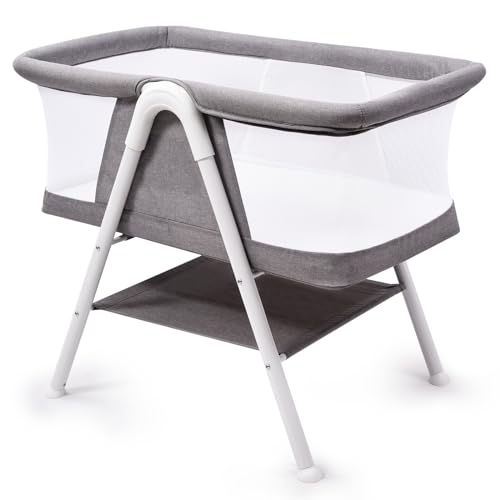Transitioning from Baby Cot to Bed: A Comprehensive Guide for Parents
The journey from a baby cot to a bed marks a significant turning point in a kid's advancement. It represents independence and an action toward growing up. However, this transition can typically be intimidating for both parents and children. Understanding the process, the ideal timing, and how to make the shift smoother can substantially help in this journey. This short article explores the necessary to think about when transitioning your child from a cot to a bed, consisting of common FAQs, suggestions, and a structured plan to guarantee the procedure is as smooth as possible.
Why Transition from a Cot to a Bed?
Developmental Milestones
Transitioning to a bed is typically triggered by a number of factors:
- Physical Growth: As kids grow, they outgrow their cots. The average size for a convertible cot is normally implied for infants as much as 3 or 4 years old.
- Cognitive Development: As young children end up being more curious and familiar with their environments, they may attempt to climb out of their cots, posturing safety risks.
- Potty Training: Once a child is potty trained, they may require easier access to the restroom, which a bed can assist in.
- Brother or sisters: The arrival of a new sibling can likewise demand this transition, as the cot might require to be released up.
When to Make the Transition
There is no one-size-fits-all response to when a child should transition from a cot to a bed. However, here are some indications that it may be time:
- Climbing Out: If the kid is trying to climb out often.
- Age Consideration: Many experts advise this transition around the age of 2 to 3 years, although every child is unique.
- Need for Independence: Children might express a desire for a big-kid bed.
Kinds Of Beds Suitable for Toddlers
Not all beds are developed equal when it pertains to children. Here's a breakdown of appropriate bed types:
| Bed Type | Description | Pros | Cons |
|---|---|---|---|
| Young child Bed | Smaller sized, lower to the ground, typically with side rails. | Size-appropriate for young children; stability. | Limited life expectancy as they outgrow quickly. |
| Single Bed | Standard size bed meant for older children. | Lasts longer; can be utilized for years. | May be too big for a toddler; threat of falling. |
| Convertible Crib | Crib that transforms into a toddler bed. | Versatile; saves money in the long run. | Can be expensive; some might not provide full-sized options. |
| Loft Bed | Raised bed with space beneath for play or storage. | Maximizes space; enjoyable for kids. | Not ideal for really kids; security issues. |
Steps to Transition Smoothly
Transitioning to a bed can be made much easier with cautious preparation. Here's a detailed guide:
1. Prepare the Space
- Select a Location: Decide where the bed will be positioned.
- Childproof the Room: Since young kids are naturally curious, make sure that furniture is steady, sharp edges are covered, and harmful products are out of reach.
- Keep Familiar Items: Retain preferred toys and bedding to use convenience in the new environment.
2. Present the Bed
- Include Your Child: Let your kid help choose their bed or bed linen to create excitement.
- Explain the Transition: Make them comprehend that they are ending up being a huge kid by having a big-kid bed. Use encouraging language.
3. Make the Swap
- Bedtime Routine: Keep the bedtime routine constant. Best Cots develops familiarity and comfort during the transition.
- Support: Offer them peace of mind however prevent being overly protective; it's crucial to motivate independence.
4. Address Fears and Concerns
- Talk About Fears: Children may have fears of falling or the dark; talk about these openly.
- Reinforce Safety: Use guard rails on the bed at first and discuss what to anticipate during the night.
5. Display and Adapt
- Be Patient: It might take time for your kid to change fully.
- Stay Consistent: Maintain the nighttime regimen, even when troubles develop.
FAQs Regarding Transitioning from Cot to Bed
Q1: How long does the shift from a cot to a bed typically take?
A1: The shift can vary considerably amongst children-- ranging from a few days to a couple of weeks-- as they change to oversleeping a new space.
Q2: Should I buy an unique young child bed?
A2: Investing in a toddler bed can make the shift simpler since they are developed with safety in mind; however, if you prefer to go straight to a single bed, that can work too with the ideal precaution.
Q3: What if my kid keeps rising?
A3: This is normal! Encourage them to remain in bed and develop positive support by rewarding them for remaining in bed through the night.
Q4: Is it all right to shift to a big bed too early?
A4: Transitioning too early can result in sleep disruptions. Affordable Cots to assess the readiness of the kid based on their indications and advancement.
Transitioning from a baby cot to a bed is a substantial step for both kids and moms and dads. With thoughtful preparation and understanding of the kid's needs, moms and dads can make the shift smoother and more enjoyable. By recognizing when to make the transition, understanding the kinds of beds readily available, and keeping a consistent regimen, moms and dads can ease worries and foster a complacency for their kid during this exciting brand-new chapter. Ultimately, Cheap Cribs is various, and persistence is type in making this journey a favorable experience.

